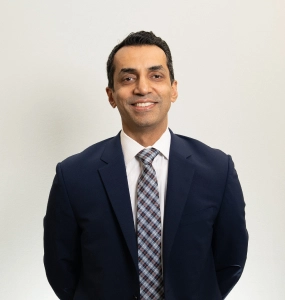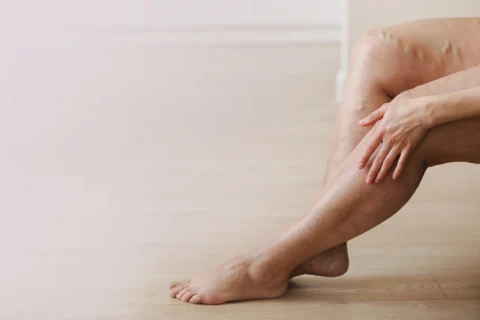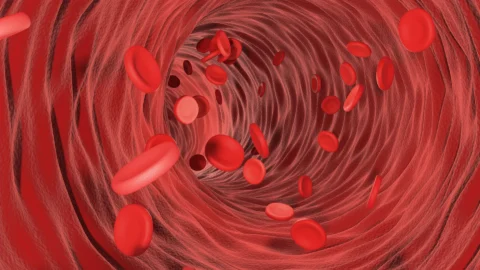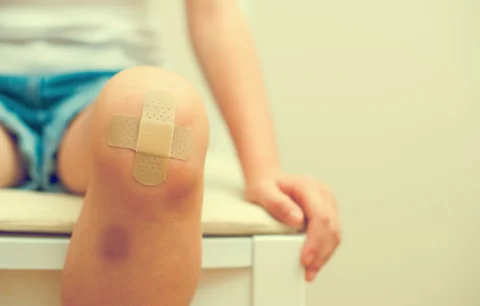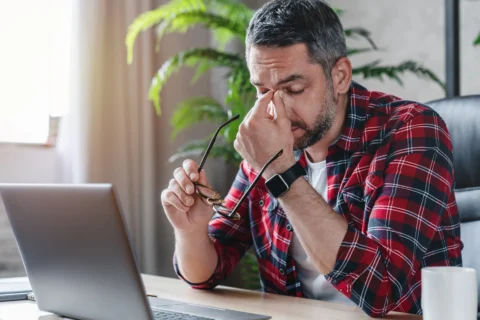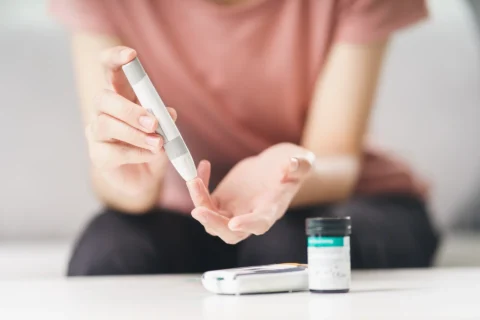Complementary and alternative medicine (CAM) is gradually becoming more popular as treatment options for different diseases and disorders. This is because most of these patients are looking for faster, cheaper, more age-appropriate, or more long-lasting results than otherwise traditional procedures. One of these CAM procedures is acupuncture, which is said to help with certain vein conditions.
So can acupuncture help with chronic venous insufficiency? Yes, acupuncture may potentially help with chronic venous insufficiency as it is observed to help with better blood flow. It also helps in managing complications of chronic venous insufficiency like chronic venous ulceration.
Living with unwanted veins is a thing of the past, when you can simply schedule a free consultation with Vein Center Doctor and find your ideal solution today.
How Acupuncture Affects Blood Flow
Through the use of color doppler imaging (CDI), a study has shown that the LR3 acupuncture point, a specific needlepoint between the first and second toes, can bring hemodynamic changes in the body. Specifically, it has been shown that putting a needle in the LR3 can lead to an increase in the blood flow in the peripheral, mesenteric, and retrobulbar arteries.
The mechanism to which acupuncture affects blood flow is speculated to be due to regional sympathetic inhibition, considering that the activation of the sympathetic nervous system results in the constriction of veins, and the release of agents that cause vasodilation such as the calcitonin gene-related peptide (CGRP).
How Acupuncture Helps in Symptoms and Complications of CVI
The idea that acupuncture brings an improvement in blood circulation raises the potential therapeutic application of acupuncture in disorders concerning blood circulation. An arterial disease due to problems in blood circulation like peripheral artery disease may be helped managed by acupuncture.
Similarly, varicose veins and other smaller counterparts like reticular veins and spider veins, are examples of venous disease concerning the improper flow of blood. This can lead to the backflow of blood instead of the direction of blood flow to be unidirectional, but this can also be helped managed by acupuncture.
Furthermore, venous leg ulcers, a common complication of chronic venous insufficiency, are reportedly improved by applying acupuncture to a 69-year-old patient. This is also because of the improvement in the blood circulation of arteries since it’s hypothesized that leg ulcers are due to hypoxia or lack of oxygen brought by the chronic build-up of excess fluid (edema) and fibrosis.
How Chronic Venous Insufficiency is Diagnosed
The proper diagnosis of chronic venous insufficiency is important to make sure that the treatment to be provided to the patient will be effective. Diagnosis may be done through careful history taking and physical examination, then proceeding with testing procedures that may be non-invasive or invasive.
1) History Taking and Physical Examination
History taking is done to ascertain the risk factors that an individual may present with, which increases their predisposition to the development of the venous disorder. Examples of risk factors associated with chronic venous insufficiency include:
- increasing age
- family history of varicose veins and other cardiovascular disorders
- high body mass index as in obesity
- pregnancy
- phlebitis
- previous leg injury
Similarly, a physical examination is done to assess if a patient presents with the common clinical manifestations of chronic venous insufficiency, such as skin findings like stasis dermatitis and lipodermatosclerosis, edema, and dilation of veins seen as spider veins, reticular veins, or varicose veins. The presence of active ulcers may also be assessed.
2) Non-Invasive Testing
Non-invasive testing may aid history taking and physical examination procedures in arriving at the proper diagnosis of chronic venous insufficiency. Commonly used non-invasive testing methods to visualize the damaged veins include:
- Venous Duplex Imaging
- Air Plethysmography
- Computed Tomography or Magnetic Resonance Venography
- Photoplethysmography
- Strain Gauge Plethysmography
- Foot Volumetry
3) Invasive Testing
Invasive testing procedures may also be done to further ascertain the diagnosis of chronic venous insufficiency, although they’re typically reserved if surgical procedures are to be done as treatment of individuals. Invasive testing procedures commonly employed include:
- Contrast Venography
- Intravascular Ultrasound
- Ambulatory Venous Pressure
Definitive Treatments for CVI

While acupuncture offers a ray of hope for people with chronic venous insufficiency, it’s still best to consider it only as one of the complementary therapies and not a sole treatment for this disorder.
It’s still a better idea to proceed with more conventional treatments because they have more available evidence supporting their efficacy and safety, as compared to acupuncture with scarce literature regarding their safety and efficacy profiles on their use for chronic venous insufficiency.
Definitive treatments for chronic venous insufficiency which have a sufficient amount of studies to back them up include modifications in the diet and lifestyle, employing conservative treatments, and undergoing interventional treatments.
1) Diet and Lifestyle
Since obesity is one of the risk factors for chronic venous insufficiency because of its effect on the venous valve and calf muscle pump function, maintaining healthy body weight through weight loss and proper exercise are good measures to improve the symptoms of chronic venous insufficiency.
Raising the legs at least 3 to 4 times a day may also help with managing the venous edema present as a common sign of chronic venous insufficiency.
2) Conservative Treatments
Pharmacologic management may also be employed to help manage the signs and symptoms of chronic venous insufficiency. For edema, a low-dose diuretic may be used. On the other hand, stasis dermatitis may be managed with topical steroid cream or ointment. Infections may also be treated using antibiotics as prescribed by a healthcare professional, and compression garments will also be instructed not to be used during active infections.
3) Interventional Treatments
Invasive treatments like surgical treatments are still an irreplaceable treatment method for chronic venous insufficiency, especially in cases that are refractory to conservative and out-patient treatments. Common vascular surgery procedures that are employed include:
- Veno-venous bypass
- Endovenous angioplasty
- Iliac vein stenting
- Phlebectomy
- Subfascial endoscopic perforator surgery
- Valvuloplasty
Vein Center Doctor: Offering the Best Evidence-Based CVI Treatments
At Vein Center Doctor, we offer the best evidence-based CVI treatments, complemented by the expertise of our healthcare professionals headed by Dr. Rahul Sood. These include radiofrequency ablation, endovenous laser treatment, sclerotherapy, VenaSeal closure system, and compression therapy.
1) Radiofrequency Ablation
Radiofrequency ablation entails the delivery of radiofrequency energy using an endovenous electrode advanced towards the saphenofemoral junction with the help of imaging procedures like ultrasound. This causes the constriction of veins and ultimately closure of veins through the inflammation and injury inflicted on the vein wall.
Risks associated with this procedure include burns, bruises, and infections. Similarly, this procedure can’t be done on small spider veins where cannulation can’t be done. Those with residual thrombosis also can’t undergo this procedure.
2) Endovenous Laser Treatment
Endovenous laser treatment of varicose veins employs the same principle as radiofrequency ablation in that it entails the advancement of a catheter towards the saphenofemoral junction to close off the damaged vein. However, this procedure uses laser energy delivered via a diode instead of radiofrequency energy to inflict injury to the vein wall.
Risks associated with the procedure include bruising and darkening of the skin where the procedure is done. Thermal injuries like burns and paresthesias may also be present. Similarly, this procedure also shouldn’t be done on patients with very small affected veins and with residual thrombosis.
3) Sclerotherapy
Sclerotherapy is the treatment option suitable for small incompetent veins like reticular veins and spider veins. It entails the delivery of chemical agents called sclerosants in liquid or foam form to irritate the vein wall and close off these damaged blood vessels. Common sclerosants used include sodium tetradecyl sulfate and polidocanol.
Potential side effects associated with this procedure include darkening of the skin, superficial phlebitis, deep vein thrombosis, and skin necrosis.
On the other hand, this must not be done on pregnant and breastfeeding patients and those with known heart diseases like septal defects or patent foramen ovale. Patients with allergies to the sclerosing agent also shouldn’t undergo the procedure.
4) VenaSeal Closure System
The VenaSeal closure system is a minimally-invasive procedure designed to maximize the comfort experienced by the patient throughout the procedure. It doesn’t require anesthesia and doesn’t use heat or sclerosing agents to close off the affected veins.
This procedure entails the ultrasound-guided delivery of the VenaSeal adhesive made of n-butyl-2-cyanoacrylate using components including a dispensing tip and catheter.
0.1 cc of the VenaSeal adhesive is delivered upon compression of the trigger for 3 seconds then the area is compressed for 3 minutes. This is repeated until all the segments of the incompetent vein are effectively sealed off.
5) Compression Therapy
Compression therapy is considered to be the standard of care for chronic venous insufficiency and chronic venous ulcers.
It works by delivering a graded pressure that opposes the hydrostatic pressure associated with venous hypertension that causes chronic venous insufficiency. It also helps in reducing the pooling of blood to the legs with varicose veins, reducing venous wall tension, and bringing improvements to calf muscle pump function.
This procedure is easily done as this only requires covering the affected area with specialized compression garments. However, complications associated with this procedure include ischemic ulceration and compression ulcers. There are also issues of non-standardized compression grading and the compliance of patients with the procedure.
Get Excellent Outpatient Vein Care at Vein Center Doctor

Acupuncture can help in managing chronic venous insufficiency complications like a chronic venous ulcer. It’s also shown to be capable of improving blood flow. However, acupuncture, like all CAM procedures, must be seen only as a supplementary procedure and not a sole procedure used to manage chronic venous insufficiency. For best results, consult with the vein experts like our team at Vein Center Doctor.
At Vein Center Doctor, we’re committed to providing evidence-based treatments and excellent outpatient vein care. We make sure to help our patients bring back their leg veins to much better health. Learn more about the effective treatments that we offer and book a consultation with us by calling us at 1-862-500-4747.
Find exactly what you need to get rid of your vein-related problems. Dr. Sood and the rest of our team at Vein Center Doctor are ready to help: schedule your free consultation today.
